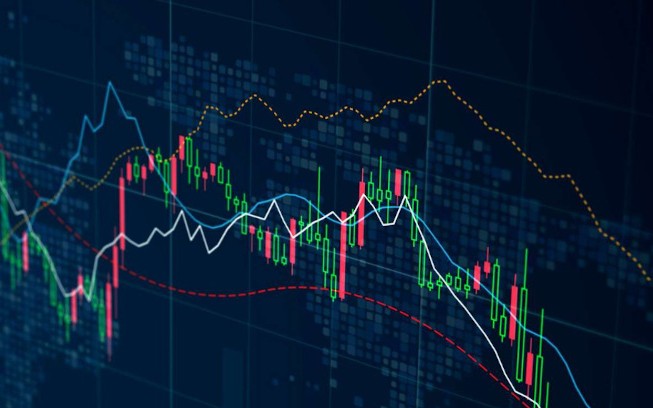
Forex Trading for Dummies: A Beginner’s Guide to Success
Welcome to the world of forex trading, where currencies are bought and sold in the hopes of making a profit. For beginners, this universe can seem daunting. However, with a little guidance and the right information, you can navigate this market with confidence. In this guide, we will cover the essential concepts of forex trading, strategies to improve your trading skills, and advice on how to select the forex trading for dummies Best Uzbek Brokers to assist you on your trading journey.
Understanding Forex Trading
The foreign exchange market, commonly referred to as forex or FX, is the largest financial market in the world. With an average daily trading volume exceeding $6 trillion, it dwarfs stock and bond markets. One key aspect of forex trading is that it takes place over-the-counter (OTC), meaning that transactions are made directly between participants, typically through electronic trading networks.
Forex trading involves the buying of one currency while simultaneously selling another. Currency pairs are the centerpiece of this market and are typically categorized into three types: major pairs, minor pairs, and exotic pairs. Major pairs include the most traded currencies, such as the Euro/USD, USD/JPY, and GBP/USD, while minor pairs comprise less commonly traded currencies. Exotic pairs involve a major currency paired with a currency from a developing economy.
Getting Started with Forex Trading
The first step in becoming a successful forex trader is to educate yourself. Understanding the terminology and various market dynamics is crucial. Start with the following basic concepts:
- Pips: The smallest price movement in the forex market, typically representing a one-digit change in the fourth decimal place.
- Spread: The difference between the buying and selling price of a currency pair, which is the broker’s way of making money.
- Leverage: The ability to control large amounts of money with a smaller amount of capital, allowing for greater profit potential, but also increasing risk.
- Margin: The money required to keep a leveraged position open.
After grasping these concepts, you can set up a trading account with a forex broker. When choosing a broker, it’s essential to verify their regulation status, trading fees, and the available trading platforms.
Creating a Trading Plan
A trading plan is crucial for guiding your trading activities and managing your risk effectively. Every trader should have a structured approach that outlines their trading strategy, including:
- Goals: Define your financial goals and the time frame to achieve them.
- Risk Management: Establish how much capital you are willing to risk on each trade and your overall account.
- Trading Strategy: Develop a game plan for entering and exiting trades based on technical or fundamental analysis.

Following a well-structured trading plan can help mitigate impulsive decisions and keep your emotions in check.
Analysis Techniques in Forex Trading
Successful forex trading is heavily reliant on analysis. There are two main types of analysis that traders use:
Technical Analysis
Technical analysis involves studying price charts and using various indicators to forecast future price movements. Common tools include:
- Moving Averages
- Bollinger Bands
- Relative Strength Index (RSI)
- Fibonacci Retracement Levels
By analyzing historical price movements and patterns, traders can make informed decisions about future trades.
Fundamental Analysis
Fundamental analysis, on the other hand, looks at the economic, political, and social factors that can influence currency values. Economic indicators such as GDP, unemployment rates, and interest rates can have a significant impact on the forex market. News events, such as political elections or central bank meetings, also play a vital role in shaping traders’ decisions.
Developing a Risk Management Strategy
Risk management is a critical part of successful trading. The forex market can be highly volatile, and without proper risk management, traders may incur significant losses. Here are some key elements to consider:
- Use Stop-Loss Orders: A stop-loss order automatically closes a trade at a predetermined price to limit losses.
- Position Sizing: Determine how much of your capital to risk on a single trade based on your risk tolerance.
- Stay Informed: Keep an eye on market developments and stay updated on economic news that could affect your positions.

Key Trading Strategies
As a trader, you might choose to implement various strategies based on your trading style, whether it’s day trading, swing trading, or position trading. Here are some popular strategies:
Scalping
Scalping is a short-term strategy that involves making numerous trades throughout the day to capitalize on small price movements. Scalpers often trade on lower timeframes and aim to make small profits with each trade, accumulating gains over time.
Day Trading
Day trading involves opening and closing trades within the same trading day. Day traders rely heavily on technical analysis and market indicators to make their trading decisions.
Swing Trading
Swing trading is a medium-term strategy where traders hold positions for several days or weeks to benefit from expected price swings. This strategy often incorporates both technical and fundamental analysis.
Emotional Discipline in Trading
One critical aspect often overlooked by new traders is emotional discipline. The ability to remain calm and stick to your trading plan during periods of volatility is crucial. Many successful traders emphasize the importance of controlling emotions like fear and greed, which can lead to hasty decisions that result in losses.
Conclusion
Forex trading can provide exciting opportunities for financial gain, but it comes with significant risks. By educating yourself, creating a solid trading plan, employing proper risk management, and developing the right emotional discipline, you can increase your chances of success. Remember that consistent practice and ongoing learning are vital in this fast-paced market. So, whether you are just starting out or looking to improve your skills, stay dedicated, remain patient, and be willing to learn from both wins and losses. Happy trading!
